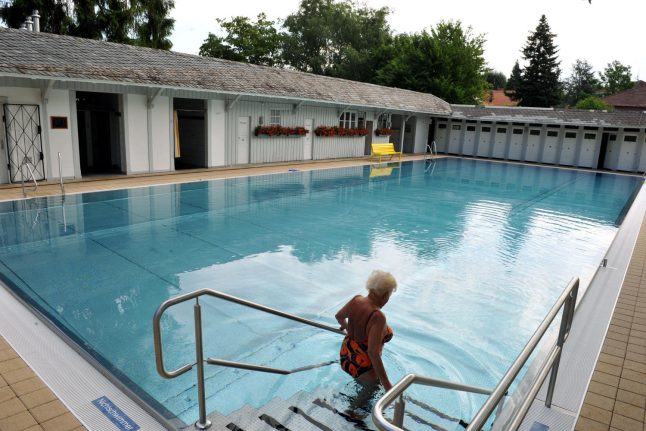More than 700 people have signed an online petition, which calls for the pool to “get rid of the regular male bathing staff” at the Freiburg women’s pool, the Loretto Baths.
The Baths were first created as a “gentlemen’s” swimming pool in 1841, and later a women’s section was added in 1886. Eventually the men’s section was converted into a place for the whole family, while the women’s part remained females only, according to the local citizens’ association.
Female swimmers there have long enjoyed the freedom of being able to walk around partially or completely naked without the male gaze, according to newspaper Taz.
But last year conflict started to arise between regular patrons and newer, Muslim women, often coming with kids in tow from France, the Badische Zeitung reported.
Long-time swimmers complained, for example, that Muslim women would eat or grill around the pool, and sometimes went swimming in regular clothing, according to Taz.
SEE ALSO. Germany's most idyllic swimming spots
Police were called in several times to mediate the conflicts, so this season the pool decided to bring in more male workers for security and as pool attendants, though the pool had for years employed at least one man at the pool. A small sign now warns that male workers could be present at the pool.
This ruffled some feathers for swimmers like Janina Talaj, a 27-year-old cultural studies and history student, who started the petition.
“The pool is no longer a women’s pool when men are there,” she told Taz.
“The new regulation of using regular male supervisory staff in the Loretto women's bath reduces the concept of a ‘ladies' bath’ to absurdity,” she writes in the petition.
“Not only does it exclude many Muslim women, but also women who want a more protected area due to their experiences of violence, or those who simply want to take a break from everyday looks and encroachments.”
The pool company has said that while they would gladly hire women as security and pool workers, there simply aren’t enough women in these fields.
A spokesman for the Mevlana-Moschee in Freiburg proposed a compromise.
“When there are not enough female employees, then special days only with female employees could be conceivable,” said spokesman Serdar Özer.
In 1980, the pool faced a legal challenge for a very different reason: a man filed a complaint about men not being able to use the pool. But he lost, with the local administrative court pointing out that there was already a family section for all genders, according to Die Zeit.



 Please whitelist us to continue reading.
Please whitelist us to continue reading.